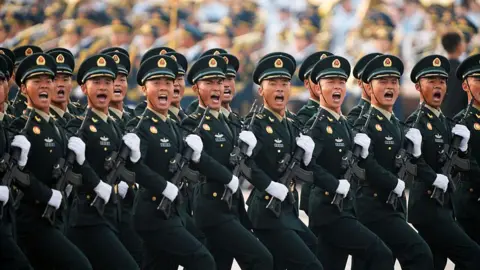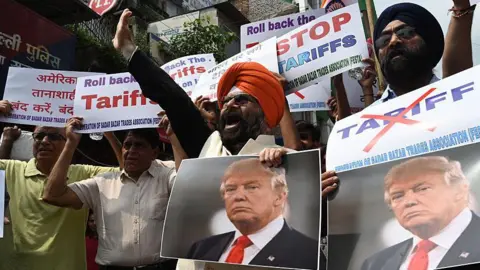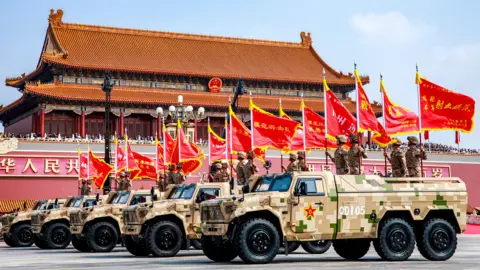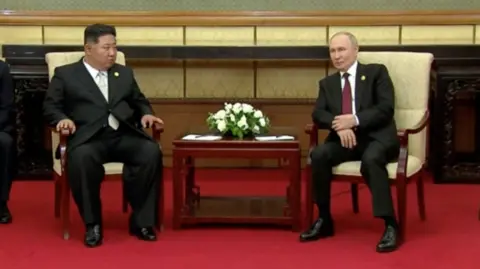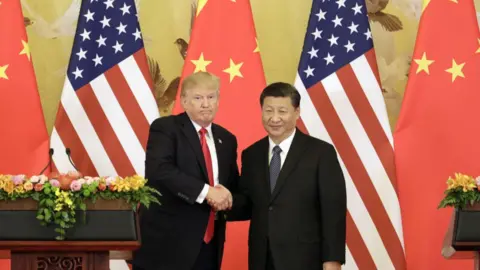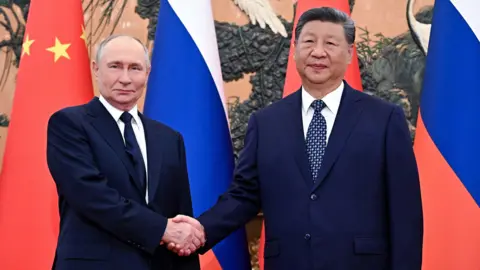In the wake of imposed tariffs by US President Donald Trump on Chinese goods, the nations of South East Asia find themselves in a precarious situation. Entrepreneurs such as Hao Le, who leads SHDC Electronics in Vietnam, have capitalized on the influx of US-bound exports from China, generating substantial revenue. However, impending tariffs of up to 46% on Vietnamese goods could threaten this burgeoning business, with many local manufacturers struggling to match the low prices of Chinese imports.
Trump's initial tariffs in 2016 created a wave of inexpensive Chinese products in South East Asia, resulting in a negative impact on local manufacturers while simultaneously offering new growth opportunities for others. However, Trump's latest tariffs pose a potential barrier for fast-growing economies like Vietnam and Indonesia, both of which have ambitious plans to become central players in global technological supply chains.
During recent visits to Vietnam, Malaysia, and Cambodia, Chinese President Xi Jinping encouraged regional unity against Trump’s tariffs, highlighting the significance of South East Asia to the Chinese economy. With 16% of China's exports destined for this region, its economic health heavily relies on maintaining robust trade ties.
In response to Trump's announcements, South East Asian governments have quickly entered into negotiations and trade agreements to protect their interests. Solutions proposed include the scrapping of tariffs on US goods by Vietnam, as well as plans from Thailand to increase imports from the US to mitigate the impending levies. The region’s leaders emphasize their strategic importance, hoping to establish themselves as vital economic partners for the US.
The Association of Southeast Asian Nations (ASEAN) seeks to reinforce its economic ties while avoiding direct confrontation with the US regarding tariffs. Countries like Indonesia, poised to benefit from the global electric vehicle supply chain, and Malaysia, which aims to become a semiconductor hub, now grapple with the looming economic threat posed by these tariffs.
Despite the ongoing tariff discussions, the resulting pressure from competition with Chinese goods continues to strain local businesses throughout the region. Srityex, once Thailand's largest textile manufacturer, has suffered from factory closures and job losses, reflecting a broader trend of local industries feeling the brunt of a saturated market.
Governments in South East Asia are now advocating for protective measures against the influx of cheaper Chinese imports, while simultaneously seeking to harness the advantages of being situated near both China and the US. As regional leaders tread carefully in the unfolding trade conflict, they recognize that their prosperity hinges on finding a delicate balance between the two economic giants.
While some businesses look to pivot towards new markets in the wake of tarnished relationships with China, many have noticed a sharp increase in inquiries from US buyers searching for alternatives outside of China. The region stands at a crossroads where the potential loss for China could become an unexpected gain for South East Asian economies, should they navigate their political and economic pathways wisely.








